Beijing Secret Realm 丨 "Beijing West Palace Museum" Wanshou Temple
Author:Timeout Beijing Time:2022.09.27
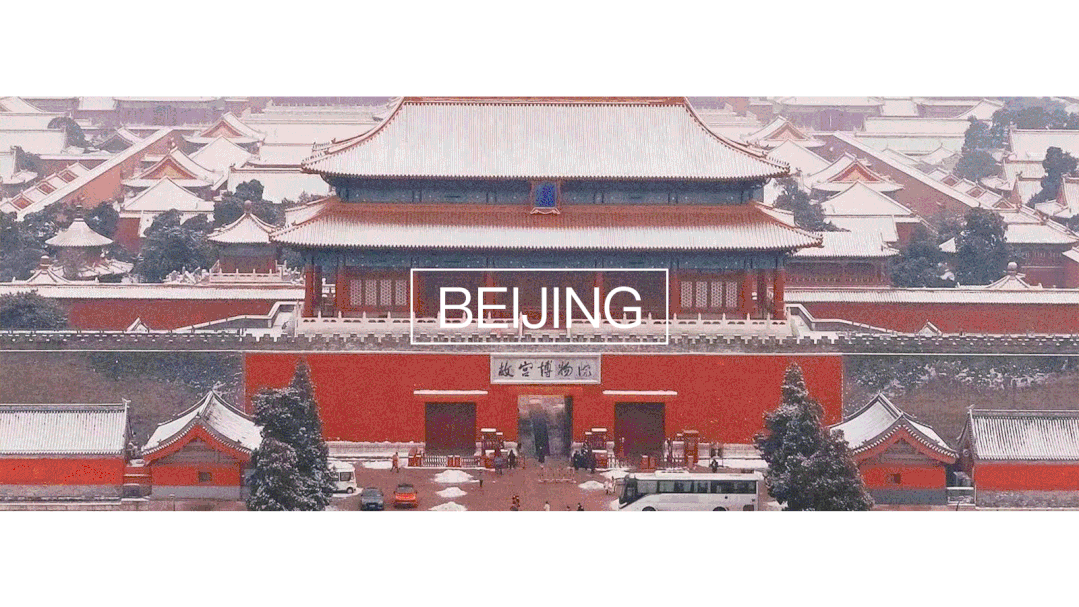
""
This is a specific place for Royal Life
This was the place of the sound of Yongle Big bell
This is the "Little Shouning Palace" outside the Forbidden City
Here we have witnessed the prosperity and decline of the Qing Dynasty
................
After five years of repair, why is this large -scale ancient building complex integrating temples, gardens, and royal palaces. What kind of legendary history does it have?
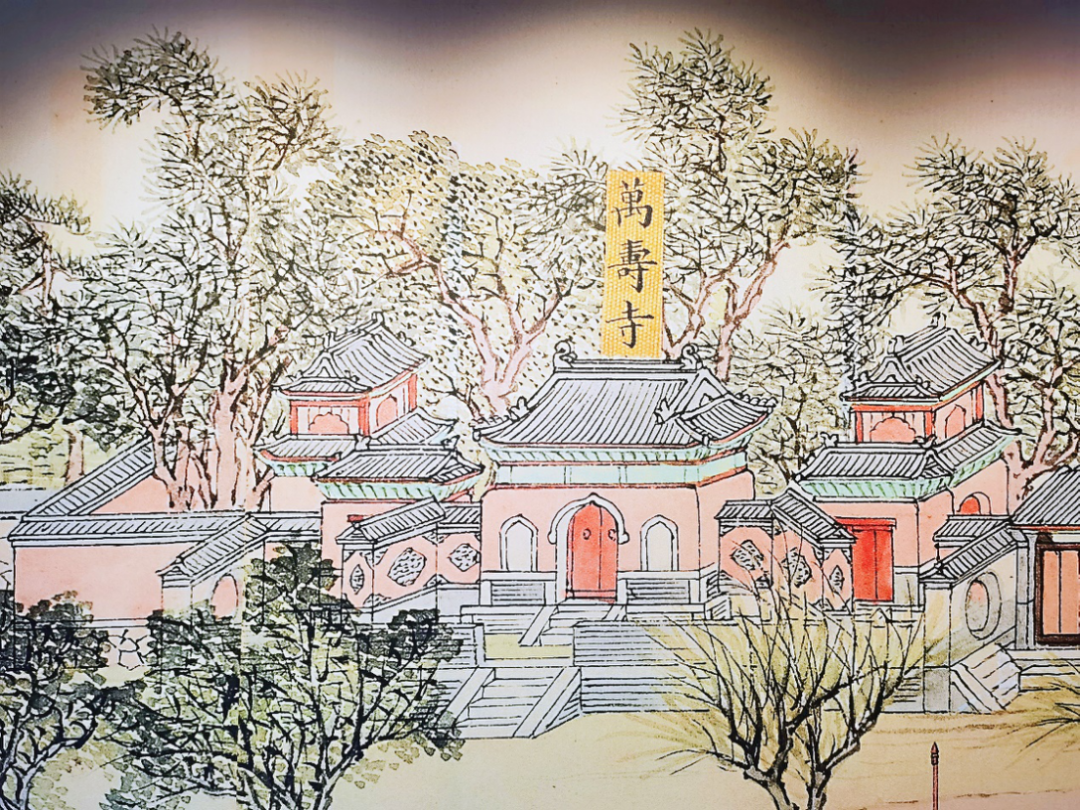
01
The past life of Wanshou Temple
Wanshou Temple was built in the five years of the Wanli year (1577), one of the famous ancient temples in Beijing. The mother of the Emperor Wanli of the Ming Dynasty and the Empress Dowager Li Sheng, who had been listening to politics, was built for Wanli, who was about to establish the image of the emperor, and was named Wanshou. Wanshou Temple fits the theory of "Five Blessings of Life". The first blessing of "Five Blessings of Life" is longevity, so it has also become a specific place for the Royal Life Celebration.

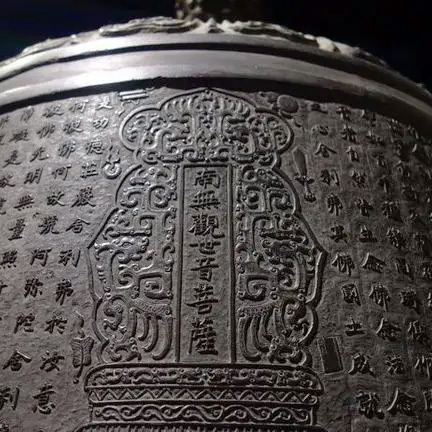
In the Qing Dynasty, the Emperor Shunzhi gave the plaque of Wanshou Temple a "Jianhuang Guo Wanshou Temple". In the 25th year of Kangxi (1686 AD), the expansion and expansion of Wanshou Temple was rebuilt. The Emperor Qianlong of the Qing Dynasty wished his mother -in -law three times, and broke the civil engineering to expand the temple. Xianglin Map is painted by the painter in the palace (the original hidden in the Forbidden City), which shows the grand occasion of Hongli in the twenty -six years of Qianlong Hongli in Wanshou Temple. More than a thousand monks were wearing crickets, holding a magic weapon, gathered on the south bank of the long river, praying to the queen queen queen, and the scene was spectacular. This is how it comes from Suzhou Street, Jingxi.
Most of the Wanshou Temple in the Ming and Qing Dynasties did not open to the outside world, and only opened and held temple fairs during the day of April to 15th of the Bath Buddhist Festival each year. According to the historical records of the Ming and Qing Dynasties, Yongle Bell, known as the "Bell King", was hung in the Wanshou Temple "Six Monks of Six Monks".
During the Apocalypse, it was rumored that the Beijing West White Tiger Fang should not sing the clock, and then lying on the ground. In the eighth year of Qianlong (AD 1743), the big bell moved to the northwest of the Beijing Jue Sheng Temple (now Dazhong Temple).

In 1860, when the British and French forces entered Beijing, Wanshou Temple was burned, and in the early days of Guangxu, it was destroyed. In the 20th year of Guangxu (AD 1894), in order to welcome the 60th Shou Code of the Empress Dowager Cixi, Wanshou Temple re -rebuilt again, expanded the Yanshou Hall, added Qianfo Pavilion, and newly built the Rizhao Tower for dressing. As the exclusive vegetable garden of the temple, Liangtian has been upgraded into a palace, which is known as the "Xiaoshou Ning Palace". The Empress Dowager Cixi often worked as a Buddha and rest in Wanshou Temple on the way to the Summer Palace.
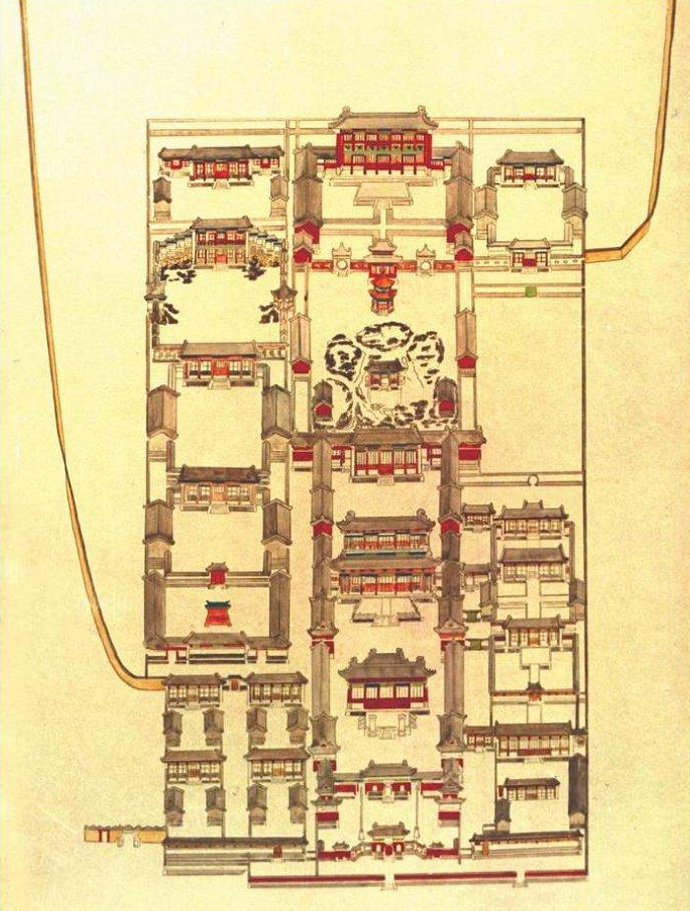
During the Qing Dynasty, the pattern of painting Wanshou Temple
After the three rebuilds and expansion of the Qing Dynasty, Wanshou Temple formed a huge pattern of three roads and seven advances. Among them, the middle road is a typical temple, solemn and majestic; the West Road is an emperor's palace, and the richness is magnificent; The most rare thing is that after the building in the middle, there is a garden, a rushing corridor, a monumental pavilion, and a Cangsong Cuipi, which is simply the epitome of the Royal Garden. Wanshou Temple integrates Ming and Qing Temple, Cixi Palace, and Royal Gardens, so the folk calls it here as the "small Forbidden City".
After the First World War, Ode the two countries became defeated countries, all military personnel in China became prisoners of war, and prisoners of war in Beijing were locked in two prisoners of war camps. One of the West Garden's captives was relocated in 1918 In the Wanshou Temple.
Because the Beiyang government did not dare to offend the foreigners, the daily life of the German prisoners of war was very comfortable. Not only did they have wine and meat, they could also play football and play tennis, and fully enjoyed the noble life. Because of this, Wanshou Temple also attracted the attention of foreign photographers, leaving many artistic works that are different from general landscape photos.
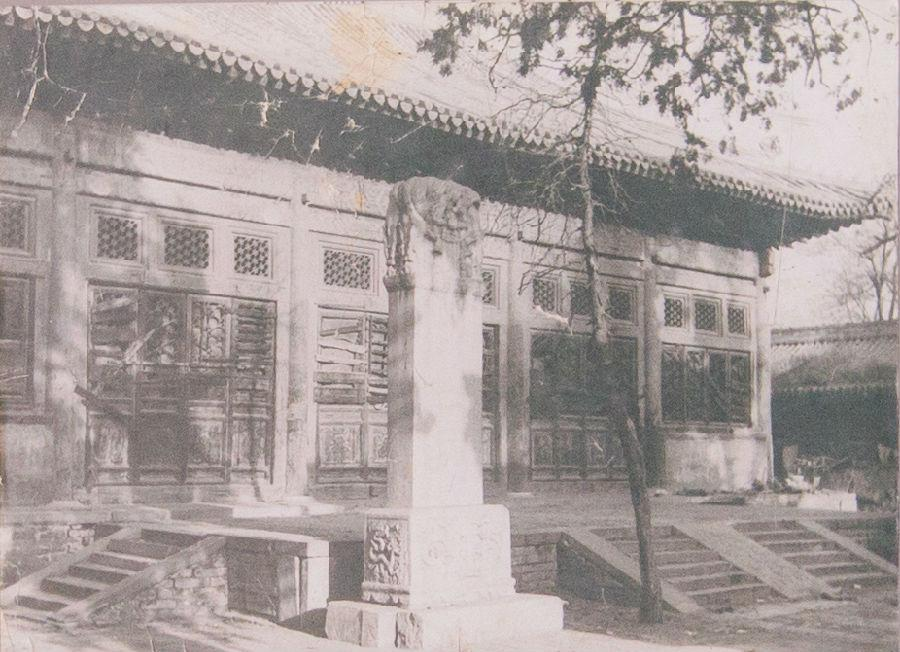
In 1931, Wanshou Temple opened an exile school to collect students in exile in Northeast China. In 1937, Wanshou Temple became the second -stage drug detoxification center in Peiping. From 1945 to 1949, Wanshou Temple was first taken over by the Kuomintang Army's military station, and was taken over by the General Staff of the Chinese People's Liberation Army. From 1958 to 1976, most of the Buddha statues in the temple were demolished one after another. Under the struggle of the cultural relics management department, the main building of Wanshou Temple was preserved. In 1985, Wanshou Temple was opened as the Beijing Art Museum.
From 2018 to 2022, Wanshou Temple started a new round of repair projects, carried out large -scale repair on the middle road building, renovated the West Road Palace Building, carried out retirement and cleaning up the shantytowned area of the East Road, and carried out archeological excavations.
Finally, on September 16, 2022, Wanshou Temple was re -opened to the public as the site of the Beijing Art Museum.
02
Exhibition display of Wanshou Temple
Wanshou Temple, located in the south and Zizhuqiao Bridge north of Qihua Street, northwest of the west of Beijing, north, the west side of the Changhe Guangyuan Zhara of the Changhe in the Ming and Qing Dynasties. Wanshou Temple is divided into east, middle and west roads. The middle road is the main building. A total of seven entrance to the courtyard within the mountain gate is the mountain gate hall, the heavenly king hall, the Huiri Changhui Hall (that is, the Daxiong Palace), the Wanshou Pavilion, the Dazen Hall, the Imperial Beidou, the Wanshou Tower, etc. There are rooms and houses on both sides of each hall.
This open area is mainly five basic display of five basic display of Wanshou Temple Middle Road and the abbot. When you come here, you can see the important historical cultural relics of Wanshou Temple, such as the restored mountain gate "Hongfu Qitian", and the Buddha statue displayed in the original display of the Huiri Changhui Hall.

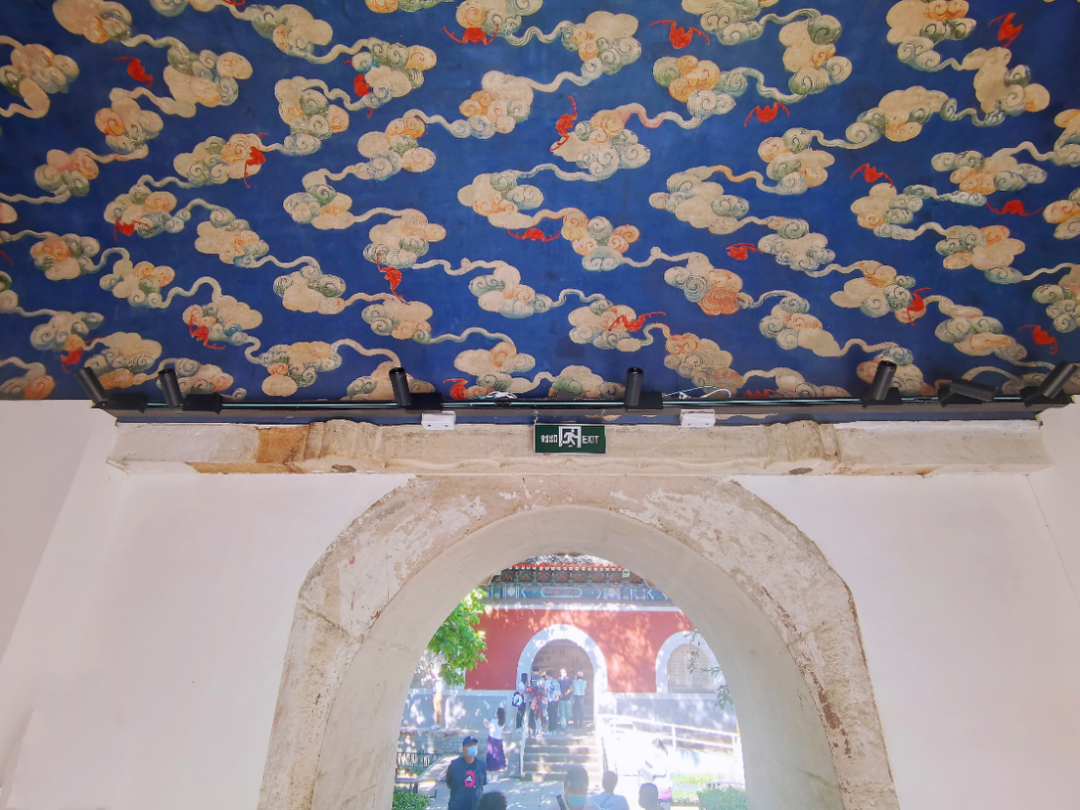
Entering the mountain gate from the entrance, the plaque of "Jianjianhuangshou Temple" was hung above the door of the temple, and the "Shunzhi Two -year Season Xia Li" was placed. There are coupon -type fake windows on both sides, and the stone carvings are pierced in the middle. The biggest highlight is the "Hongfu Qitian" painted by the top of the mountain gate, which was painted by the Wanshou Temple during the renovation of Wanshou Temple during the Qing Dynasty. Nearly a hundred red bats with different shapes flew between the blue sky flowing clouds, which is spectacular. Out of the mountain gate, there is a drum tower on the left, the bell tower on the right, and the heavenly palace in the middle. At present, the Temple of Tianwang Temple is exhibited by the History of Wanshou Temple. Through the time, Wanshou Temple has sorted out the process of several times of the construction and expansion of Wanshou Temple. Among them, Wanshou Temple Repairing the Daxiong Palace "Empress Kangxi Fifty -seventh Prince Evergrande Sacrifice Filial Filial Filial Filial Filial Filial Filial Filial Filial Payment" was the first time to meet the audience. The article mainly records the worship activities of the day, becoming the first hand of studying the religious activities of Wanshou Temple in the early Qing Dynasty. material.

From the Temple of Heaven, the left side is the peaceful temple, and the right side is Zhuyan Wanshou Hall, and the middle is Hui Ri Changhui Hall. As a Buddhist statue art exhibition, the Endo Temple and Zhu Yan Wanshou Temple demonstrated the two themes of the Chinese Buddhist statue art and Tibetan Buddhist statue art. The front of the Huiri Changhui Hall is dedicated to the "Three Buddhas" and "Piluzana Buddha" in the front of the Huiri Hall, which are classified as a clay sculpture eighteen Luo Han statue on both sides of the main hall.
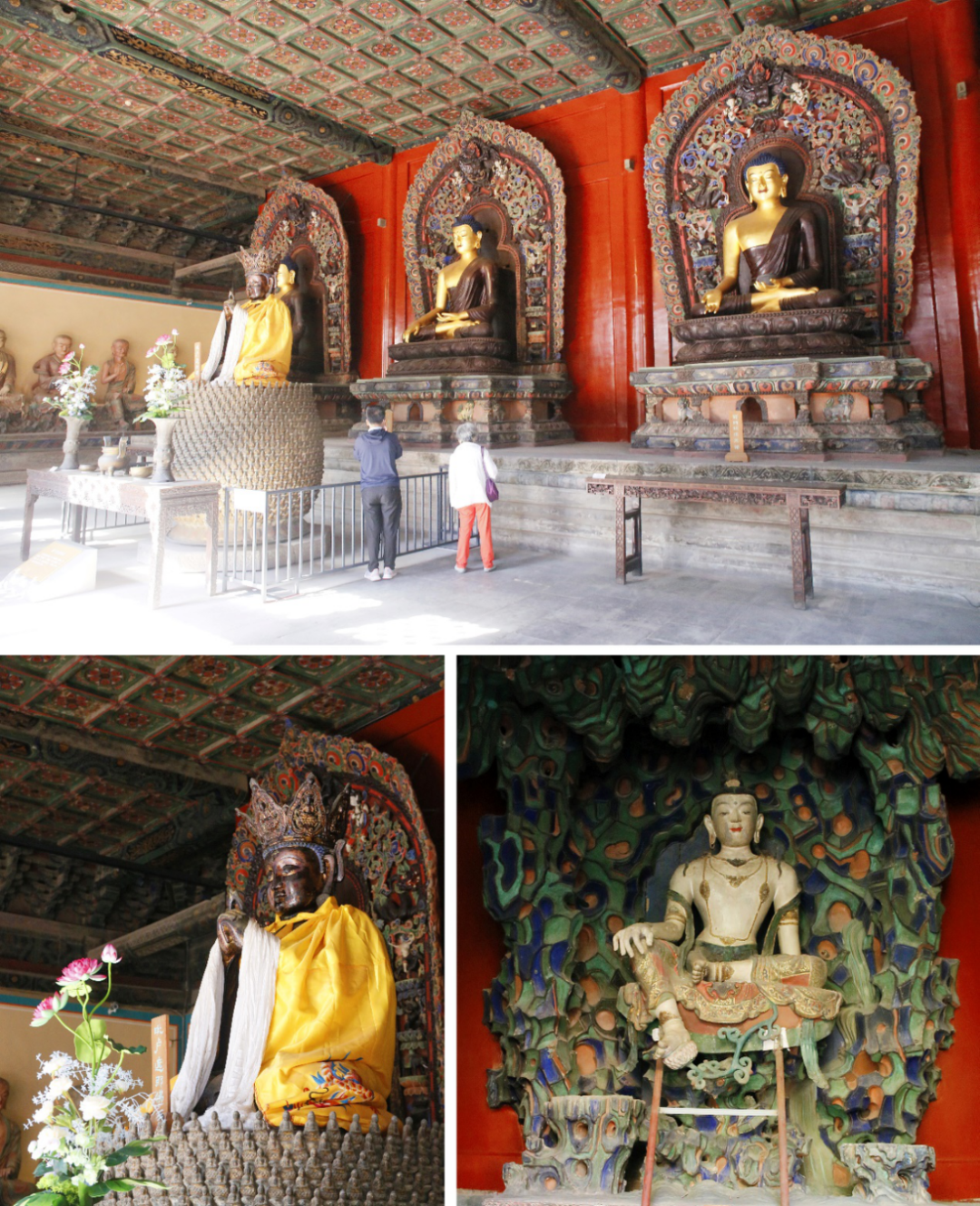
From 1958 to 1967, the hall was used as a warehouse, and a large amount of materials stacked will cover the statue to retain them, becoming the only place in Wanshou Temple to preserve the original state of the Qing Dynasty.
Out of the Huiri Changhui Hall, the main hall is Wanshou Pavilion, the highest building in Wanshou Temple. In the main hall, it is a special exhibition of Ji Shou cultural relics. It has selected precious collections related to the theme of "Shou" theme of the Beijing Art Museum. The topic shows the ideal expectations of people's pursuit of life and the traditional virtues of Confucianism and filial piety.

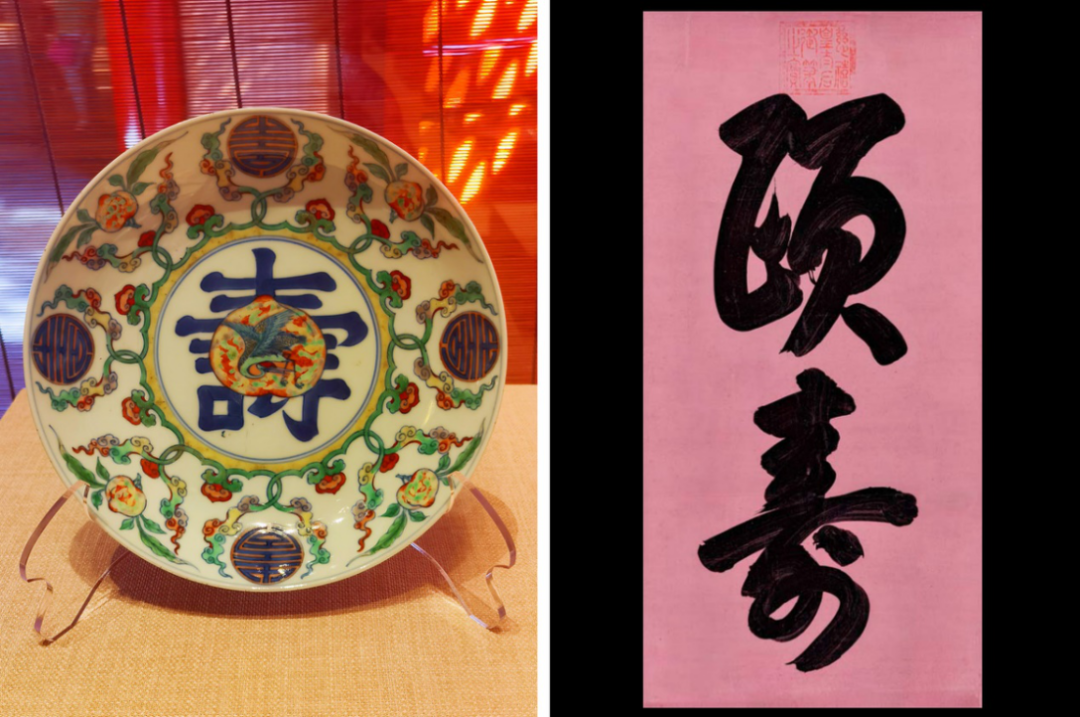
Qianlong's 43 -year -old Royal Pen "The Map of the Chao"
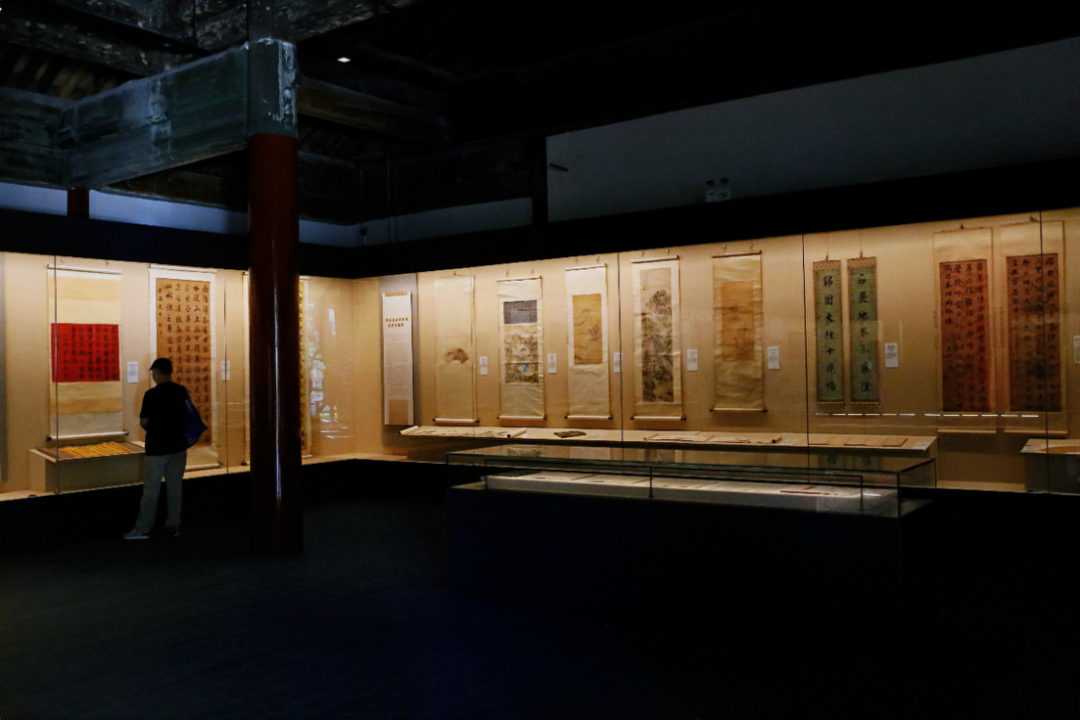
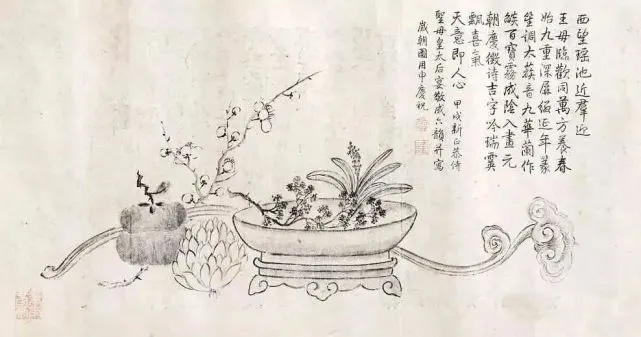
Out of Wanshou Pavilion, there is the Great Zen Hall along the middle, the left side of the Dazen Hall is a small Zen Hall, and on the right is a studio. Here is the Qing Dynasty royal calligraphy and painting art exhibition. Through the painting and calligraphy works of the royal family and descendants of the Qing Dynasty, it clearly reflects the art of painting and calligraphy and its inheritance of the Qing royal family. Among them, Qianlong Royal Pen's "The Figure of the Year of the Chao" appeared for the first time. This is the "New Year's Card" drawn by Qianlong for the mother Chongqing Empress Dowager.
The "back garden" is the Qianlong Royal Stele Pavilion and Wuliangshou Buddha Hall. The Buddhist temple is currently an issue of Golden Duo Bao Bronze Pagoda, which was cast during the Tiansa period of the Ming Dynasty. The tower has more than 400 statues such as Buddha, Bodhisattva, Luo Han, and the heavens. On both sides of the Buddhist temple are the "Western Gate" in the combination of Chinese and Western. This door that is regulated with Baroque -style has only appeared in Yuanmingyuan. It is said that the Emperor Qianlong personally instructed the results of the design elements from the Yuanmingyuan.
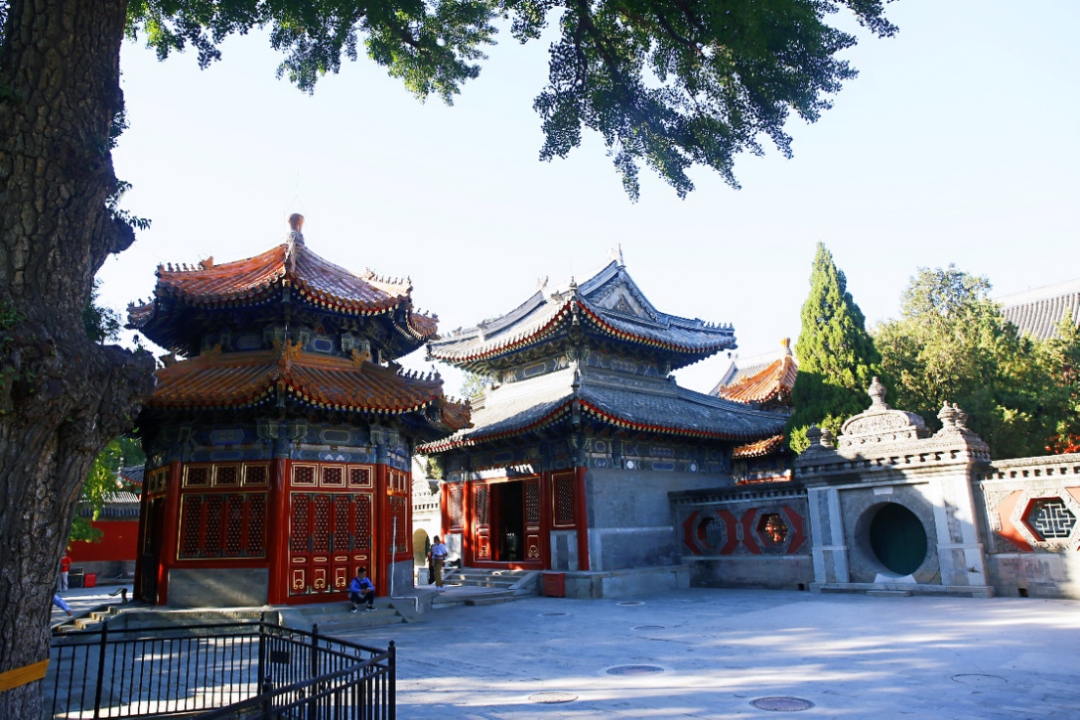
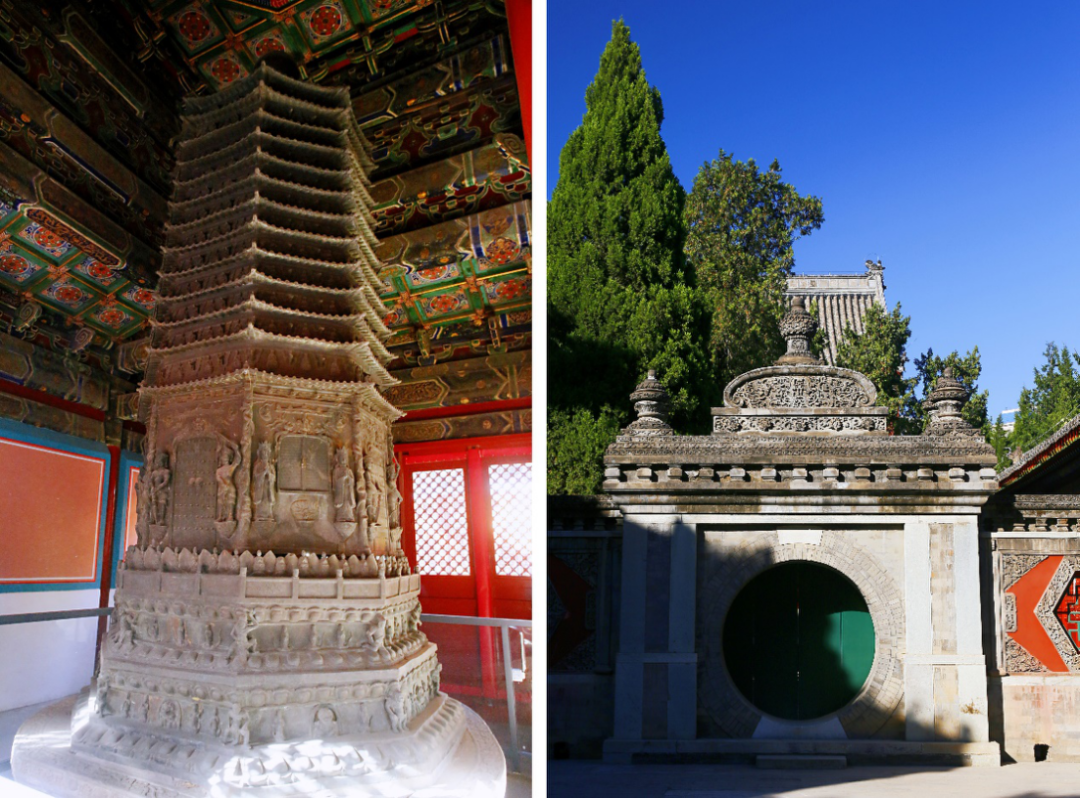
The northeast of Wanshou Temple is the first abbot hospital for the first time after the retreat. The "Yun Luo Jiamu: Chinese Traditional Furniture Exhibition" exhibited in the courtyard. More than 40 furniture from the Ming and Qing Dynasties to the Republic of China is also the first show. The beauty of different times.
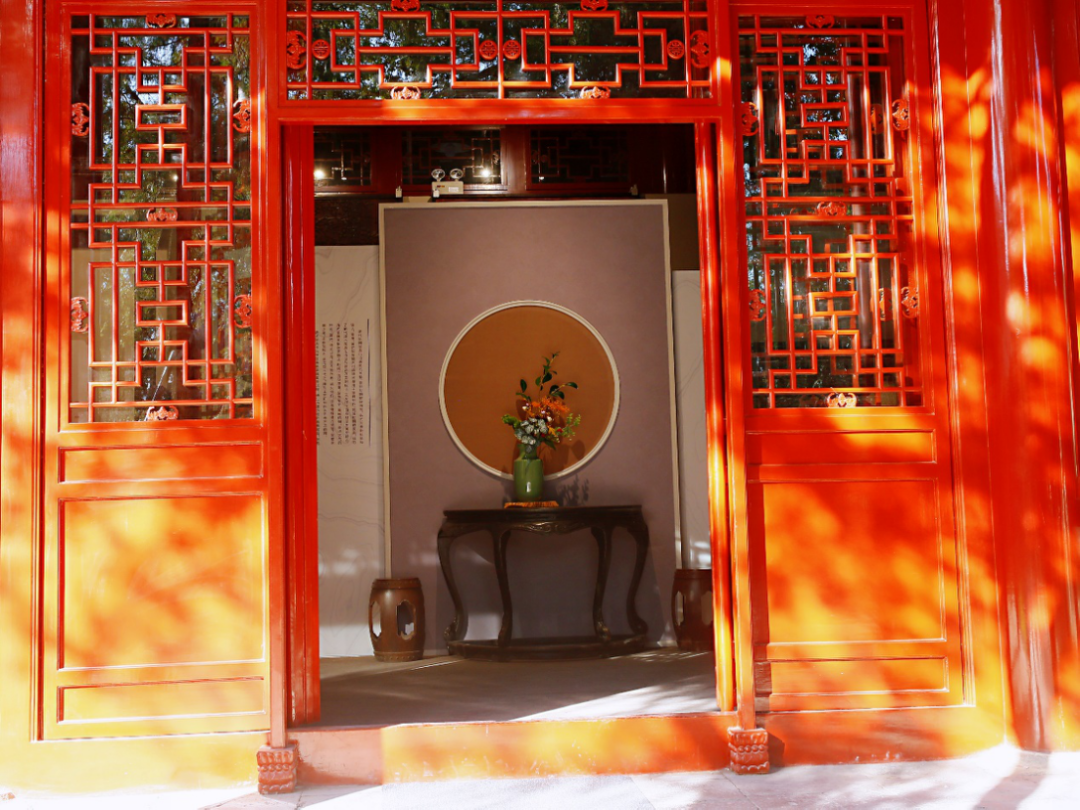
03
The cultural and creative interaction of Wanshou Temple
Wanshou Temple, who has been away for five years, has come to us with a new look. In addition to the antique temples and various collections, the pavilion has added a digital screening hall, scholars' book house, Wanshou Post Office, tenon -and -mortise classroom, Tochigi Hall, and Splendids to tourists. Interactive areas and other interactive areas to form a multi -display and experience art museum.
Wanshou Temple's cultural and creative products are rich and diverse, and are very popular. Among them, tickets, album maps, postcards, refrigerator stickers, badges, seals, etc. are particularly exquisite and absolutely attentive.
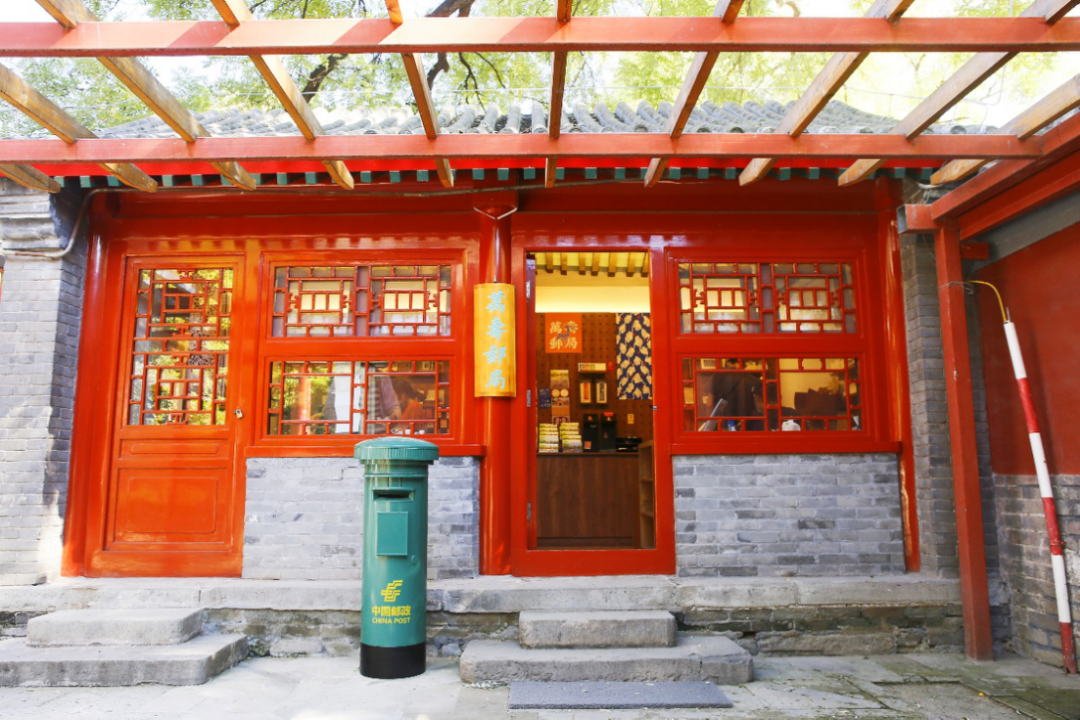
1. Ticket collection: You can redeem the paper tickets to the tourist service center next to the tourist service center before the security check. There are two types of tickets for 20 yuan and 10 yuan.
2. The picture album map: The museum carefully produced 5 cover map albums, which is the plane map of Wanshou Temple.
3. Seal seal: You can buy print postcards at the entrance at the entrance to seal. There are many kinds of postcards, which are particularly delicate, and 11 other seals can be covered! The pattern of the seal particularly likes it.
4. Cultural and Creative Store: There are cultural and creative stores at the entrance to the abbot. In addition, there are also 8 large chapters of cultural and creatives. The patterns are the patterns of "Fu", "Shou" and Wanshou Temple Temple, with a set of 25 yuan.
5. Cultural and creative coffee: Opposite the cultural and creative shop is a cultural and creative coffee shop. If you are tired, you can come to a cup of coffee, and slowly eliminate a good time.
TIPS ●
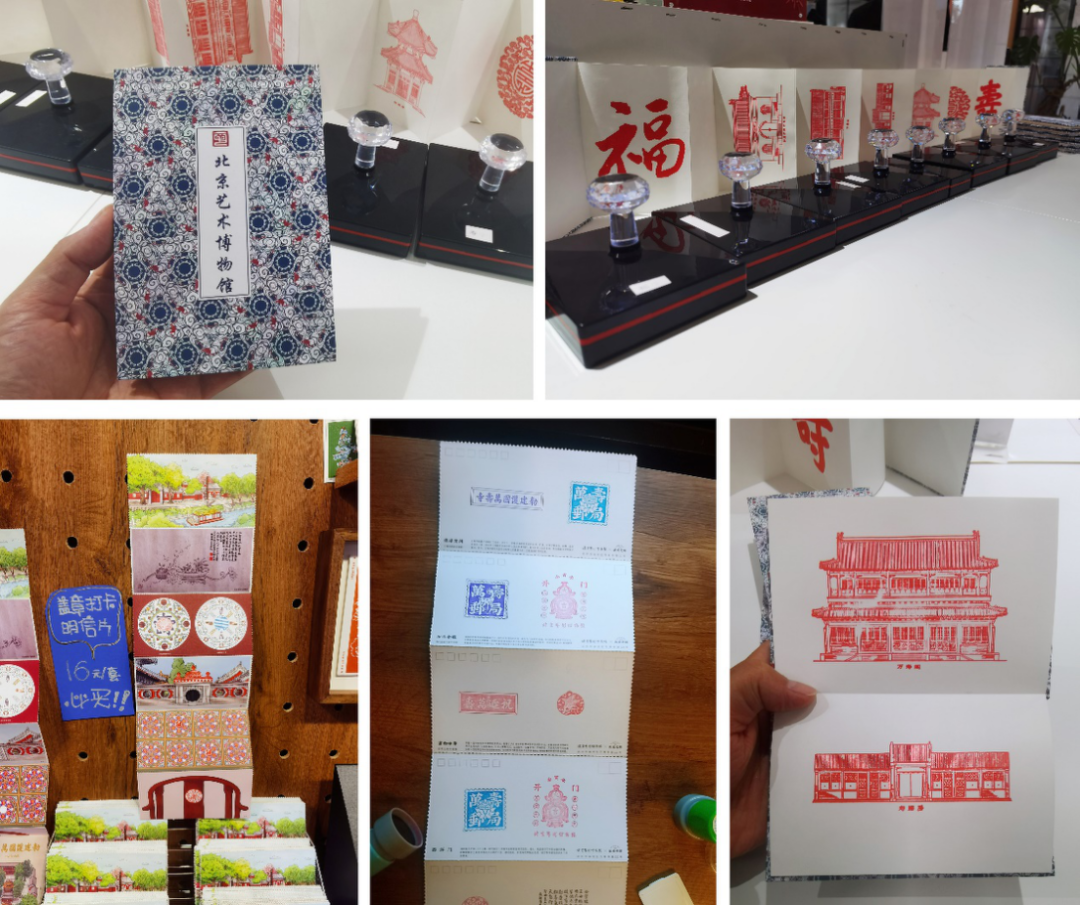
● Travel transportation: Take a bus and take 300 to get off at Wanshou Temple Station and walk about 150 meters. Take the subway to the Wanshou Temple Metro Station of Line 16 and walk for about 100 meters.
● Open hours: Tuesday to Sunday 09: 00-17: 00 (stop entering the museum at 16:30), and the legal holidays will be notified separately. Closed on Monday.
● Ticket reservation: Pay attention to the public account of the "Beijing Art Museum" to make ticket appointments, 20 yuan full price ticket, half -price student ticket 10 yuan
● Consultation telephone: (010) 68456997
Address: Wanshou Temple, West Third Ring Road, Haidian District, Beijing
● Reminder: The top 200 adult audiences every Wednesday can visit for free after reservation on the Internet.Edit: Wimble
- END -
Move the party history to the stage red theme drama "The Last Rescue" tour in Guangyuan, Sichuan
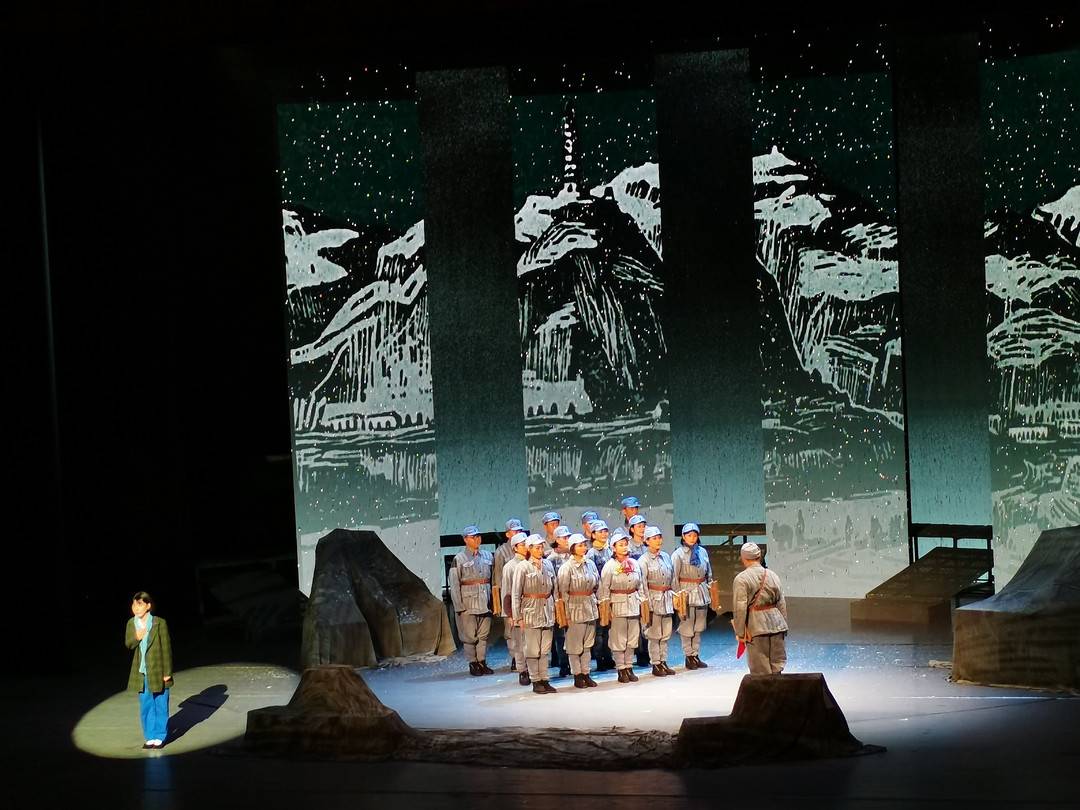
Li Kang Cover Journalist Liu YanguPeople who remember to die, and the living peopl...
Lile and Music Shandong | Weifang: [Create the Capital of East Asian Cultural Capital] [Mei Weng Yi Review] Lu Wensheng: Cai Deloic Cultivation of Three Souls
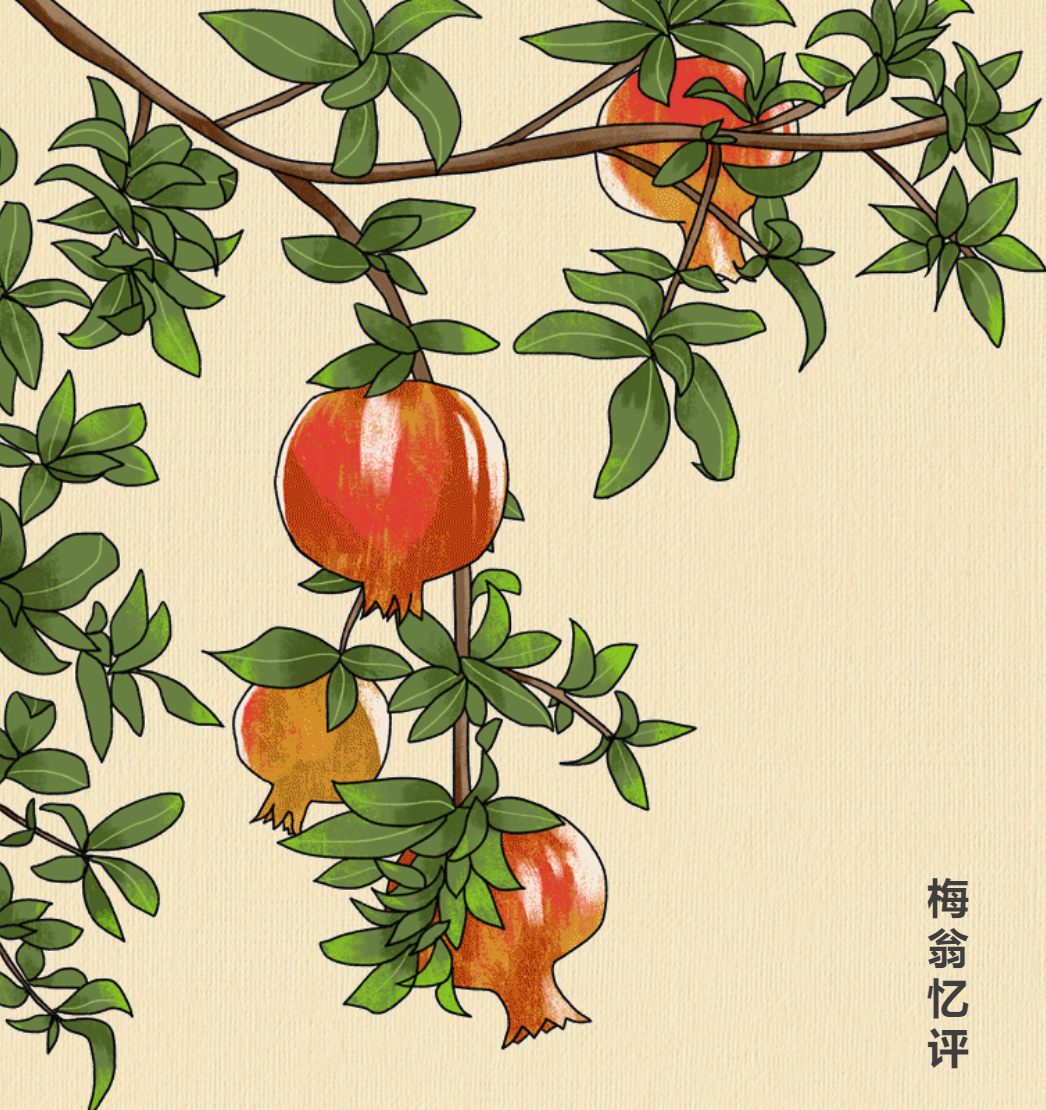
Mei Weng Yi ReviewYu Xining is an outstanding artist and art educator in my countr...